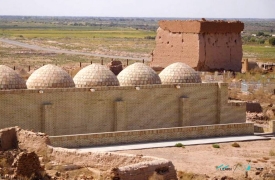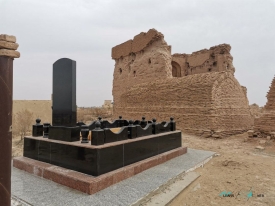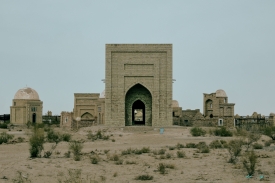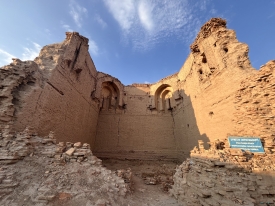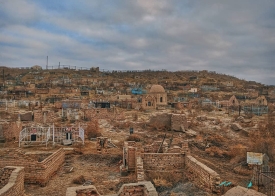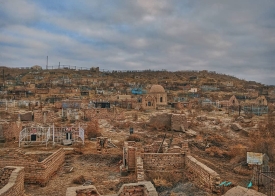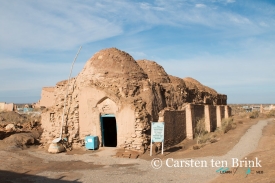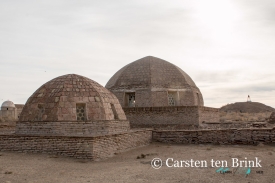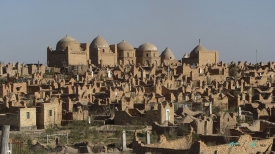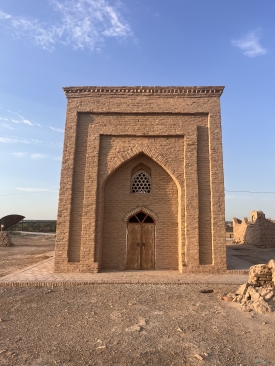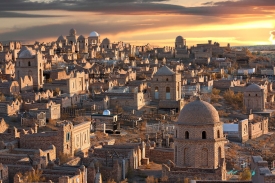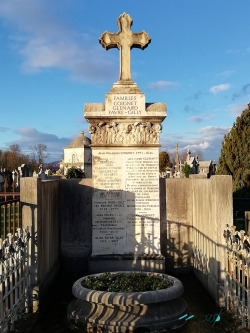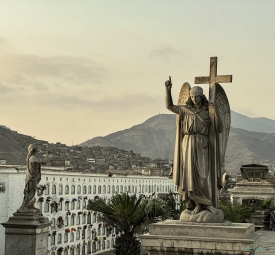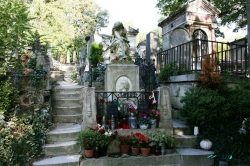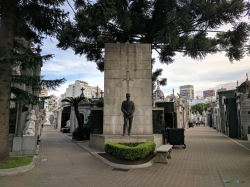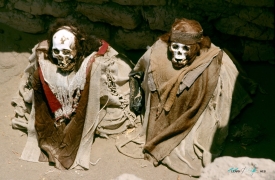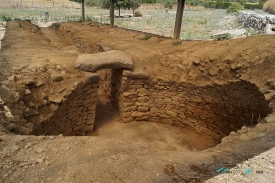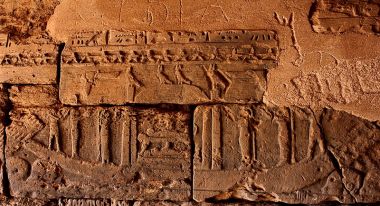ABOUT Mizdakhan necropolis
Mizdakhan, also known as Mizdahkan, is a significant archaeological and cultural site located in Karakalpakstan, an autonomous republic within Uzbekistan. Established around the 4th century BC, it served as a prominent city in the Khorezm region and later became a revered necropolis.
Gyaur-Kala Fortress: Dating back to the 4th century BC, this fortress features walls up to 10 meters thick, indicating the city's historical prosperity and defensive capabilities.
Zoroastrian Cemetery: Located on a hill opposite the fortress, this ancient burial ground includes ossuaries and remnants of dakhmas (towers of silence) used in Zoroastrian funerary practices.
Mausoleum of Mazlumkhan Sulu: A 14th-century underground mausoleum associated with local legends, reflecting the region's architectural and cultural heritage.
Shamun Nabi Mausoleum: Believed to be the burial site of a pre-Islamic preacher, this mausoleum holds religious significance and is a site of pilgrimage.
Historical Significance
Initially, Mizdakhan was the second-largest city in Khorezm after Konye Urgench. The city thrived for approximately 1,700 years, witnessing various cultural and religious transformations, including the practice of Zoroastrianism and later Islam. In the 14th century, the city faced devastation due to Timur's military campaigns, leading to its decline and eventual abandonment as an urban center. Subsequently, it evolved into a sacred burial site, with mausoleums and mosques constructed up to the 20th century.Archaeological Features
The Mizdakhan complex spans over 200 hectares and encompasses several notable structures:Gyaur-Kala Fortress: Dating back to the 4th century BC, this fortress features walls up to 10 meters thick, indicating the city's historical prosperity and defensive capabilities.
Zoroastrian Cemetery: Located on a hill opposite the fortress, this ancient burial ground includes ossuaries and remnants of dakhmas (towers of silence) used in Zoroastrian funerary practices.
Mausoleum of Mazlumkhan Sulu: A 14th-century underground mausoleum associated with local legends, reflecting the region's architectural and cultural heritage.
Shamun Nabi Mausoleum: Believed to be the burial site of a pre-Islamic preacher, this mausoleum holds religious significance and is a site of pilgrimage.
Legends and Cultural Importance
Mizdakhan is steeped in legends that contribute to its cultural significance. One such legend suggests that the site houses the grave of Adam, the first human, enhancing its sanctity among pilgrims. Another intriguing feature is the so-called "Apocalypse Clock," a structure from which, according to legend, a brick falls each year. It is believed that when the last brick falls, the world will end. Pilgrims often replace fallen bricks, hoping to prolong the world's existence.Current Status and Tourism
Today, Mizdakhan remains one of the most visited pilgrimage sites in Karakalpakstan. Its rich history, combined with the blend of Zoroastrian and Islamic architectural elements, attracts both tourists and researchers. The site offers insights into the region's cultural evolution and stands as a testament to the area's historical significance.The Best Pictures of Mizdakhan necropolis
Videos of Mizdakhan necropolis







